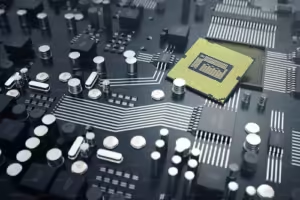
5G Network
The world is on the brim of a connectivity revolution as the deployment of fifth-generation (5G) networks gains more usage. With its promise of lightning-fast speeds, low latency, and massive device connectivity, 5G is set to reshape industries, unlock new possibilities, and transform the way we live, work, and communicate. In this article, we will explore the current state of 5G network expansion, its potential applications, and the impact it is poised to have on various sectors.
The Rapid Expansion of 5G:
The rollout of 5G networks has been progressing at an impressive pace across the globe. Telecommunication companies in numerous countries are actively deploying infrastructure and upgrading their networks to support 5G technology. The increased availability of 5G-compatible devices, such as smartphones, tablets, and Internet of Things (IoT) devices, has further fueled the demand for widespread network coverage.
Enhanced Performance and Capabilities:
One of the most significant advantages of 5G networks is their remarkable speed. Compared to its predecessor, 4G LTE, 5G offers data transfer rates that are several times faster, enabling near-instantaneous downloads, seamless streaming of high-definition content, and real-time communication. This speed boost opens doors to a wide range of applications, including virtual reality, augmented reality, and immersive gaming experiences.
Transformative Applications:
The potential applications of 5G technology are vast and span across multiple industries. In the healthcare sector, 5G can facilitate telemedicine, enabling doctors to provide remote consultations and perform surgeries with the assistance of real-time haptic feedback. Additionally, the ability to transmit large medical imaging files quickly can expedite diagnosis and improve patient care.
Smart cities are another domain poised to benefit from 5G. The technology enables the seamless integration of various systems, such as traffic management, energy grids, and public safety, leading to improved efficiency, reduced congestion, and enhanced sustainability. Moreover, 5G-powered smart grids can optimize energy distribution, reduce wastage, and facilitate the integration of renewable energy sources.
5G’s impact on transportation is set to be transformative. Autonomous vehicles heavily rely on fast, reliable, and low-latency networks to operate safely and efficiently. With 5G, vehicles can communicate with each other and with infrastructure in real time, enabling safer navigation, traffic optimization, and enhanced passenger experiences.
Challenges and Considerations:
While the potential of 5G is immense, some challenges need to be addressed. The deployment of 5G infrastructure requires substantial investments in upgrading existing networks, installing new base stations, and ensuring adequate spectrum allocation. Additionally, concerns related to cybersecurity, privacy, and the potential health effects of increased exposure to electromagnetic radiation need to be carefully addressed to build trust and ensure public acceptance.
Also Read: 14 New Technological Forecasts for 2030 That Will Reform The World
More Information About 5G Expansion and Connectivity and its features
1. Speed and Bandwidth:
5G networks offer significantly faster speeds compared to previous generations. While 4G LTE networks typically provide download speeds of up to 100 Mbps, 5G can deliver speeds ranging from 1 Gbps to 10 Gbps, and in some cases even higher. This speed boost enables seamless streaming of high-quality video content, faster downloads and uploads, and improved overall user experiences.
2. Low Latency:
Latency refers to the time taken for data to travel between a device and the server. 5G networks are designed to have extremely low latency, often in the range of 1 to 10 milliseconds. This near-instantaneous response time is crucial for applications that require real-time interactions, such as autonomous vehicles, remote surgery, and online gaming, where even a slight delay can have significant consequences.
3. Massive Device Connectivity:
5G networks are designed to support a vast number of devices simultaneously. This is particularly important for the growing Internet of Things (IoT) ecosystem, where billions of devices, sensors, and machines are expected to be interconnected. With 5G, networks can handle the massive influx of IoT devices, enabling seamless communication, data exchange, and coordination between them.
4. Network Slicing:
5G introduces the concept of network slicing, which allows network operators to divide the physical infrastructure into multiple virtual networks tailored to specific applications or industries. Each slice can be optimized to meet the unique requirements of different use cases, such as enhanced mobile broadband, massive IoT, or ultra-reliable low-latency communications. Network slicing enables more efficient resource allocation and ensures that different applications receive the necessary network performance.
5. Improved Coverage and Infrastructure:
5G networks require denser infrastructure compared to previous generations. To provide extensive coverage and support high-speed connectivity, telecommunication companies are
deploying a larger number of smaller base stations, known as small cells. These small cells are often deployed on utility poles, streetlights, and building rooftops to create a dense network of coverage. Additionally, advancements in beamforming and Massive MIMO (Multiple Input Multiple Output) technologies improve signal strength and increase network capacity.
6. Industry Transformation:
5G is expected to have a transformative impact on various industries. In manufacturing, it can enable the widespread adoption of smart factories, where machines, robots, and sensors communicate in real time, leading to increased productivity and efficiency. In agriculture, 5G can support precision farming techniques, such as remote monitoring, automated irrigation, and soil analysis, optimizing crop yield and reducing resource wastage.
7. Edge Computing:
5G networks are closely related to the rise of edge computing. By bringing computing resources closer to the network edge, data processing and storage can occur in proximity to the devices generating or consuming the data. Edge computing combined with 5G enables faster response times, reduced network congestion, and enhanced privacy and security, making it suitable for applications that require real-time processing and low latency.
8. International Deployment:
5G deployment is a global phenomenon, with countries around the world actively working on building and expanding their 5G networks. Some regions, such as South Korea, China, and the United States, have been at the forefront of 5G adoption and have made significant progress in network deployment. However, the pace of deployment varies across countries, influenced by factors such as regulatory frameworks, infrastructure investment, and spectrum availability.
It’s important to note that the actual availability and performance of 5G may vary depending on the region and the specific infrastructure deployment in that area. As technology continues to evolve, 5G is expected to unlock new possibilities and drive innovation in various sectors, contributing to a more connected and advanced digital future.
In Conclusion, The rapid expansion of 5G networks represents a pivotal moment in the evolution of connectivity. With its unparalleled speed, low latency, and massive device connectivity, 5G is set to revolutionize industries such as healthcare, transportation, and smart cities. As the deployment continues and technological advancements unfold, we can expect a future where the full potential of 5G is realized, paving the way for unprecedented innovation, economic growth, and improved quality of life.







3 thoughts on “The Accelerating Wave: 5G Network Expansion Revolutionizes Connectivity”